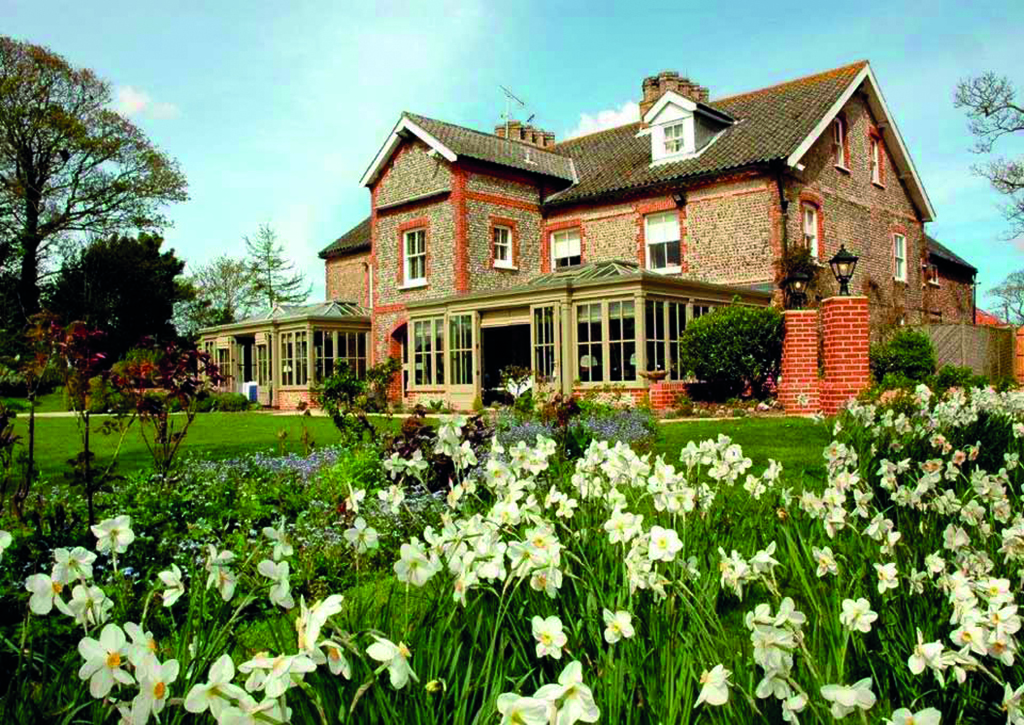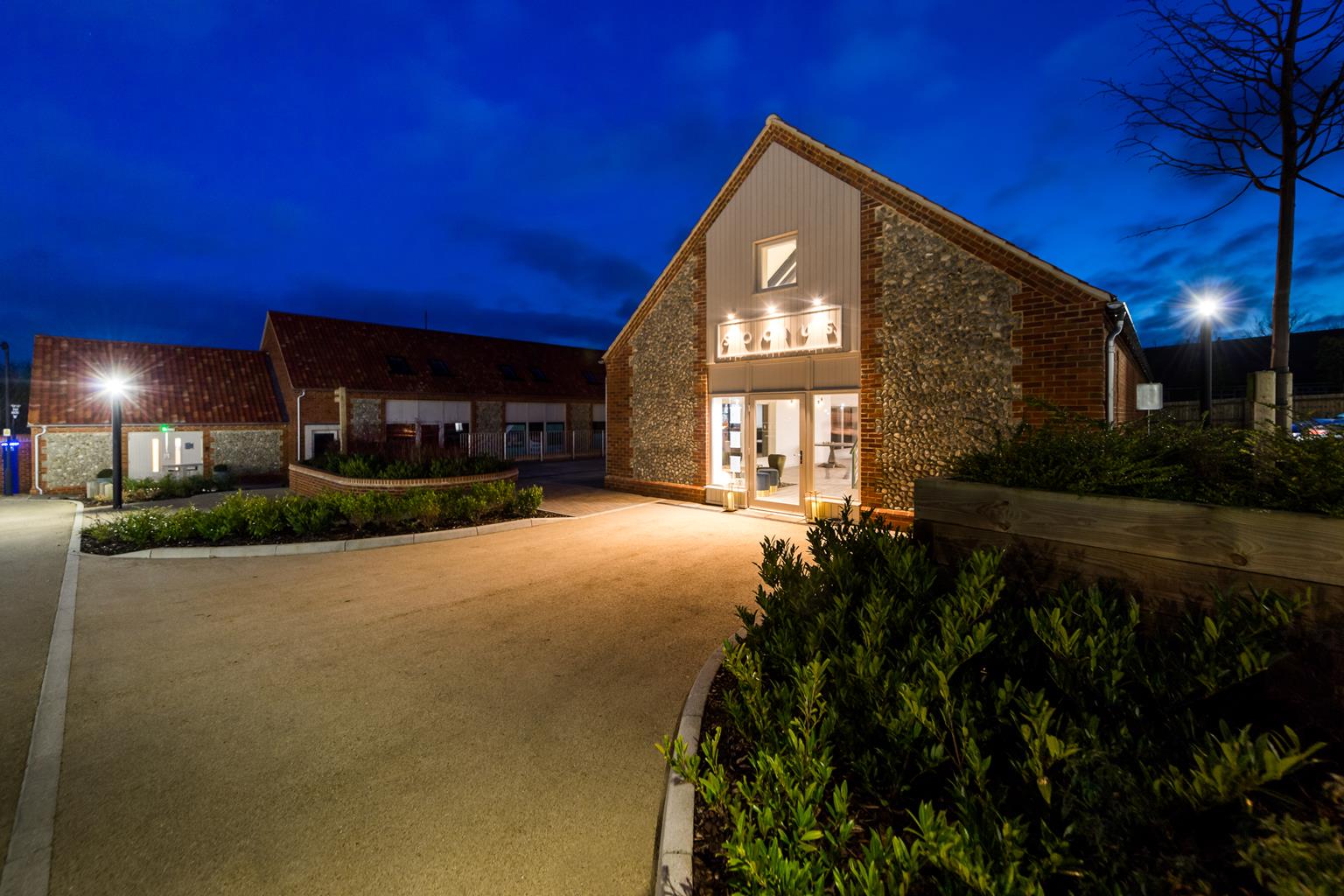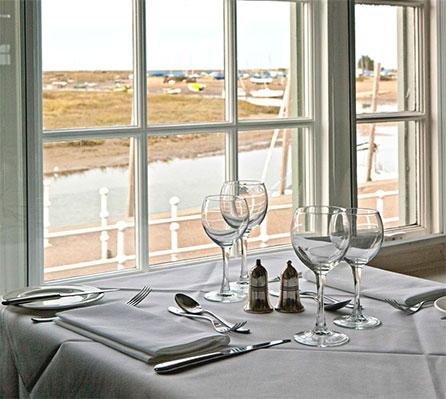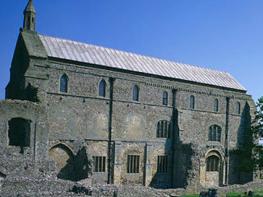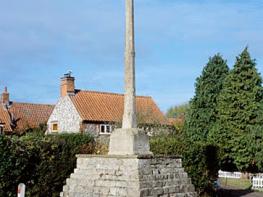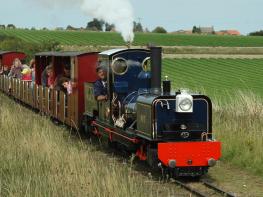Barsham Barns provide the perfect setting for your country break; from a cosy cottage for a…
From Walsingham to Great Snoring

Tread in the pilgrims' footsteps around one of the most important medieval shrines in England.
7.25 miles (11.7kms)
About the walk
In the 11th century, Richeldis de Faverches was lady of the manor in Walsingham. One night the Virgin Mary appeared to her in a dream and told her to build a copy of the Sancta Casa, the 'Holy House' in Nazareth where she had been living when the Angel Gabriel announced she was pregnant. Richeldis was torn between two sites for the building, but work began on one of them as soon as she had gathered supplies and labourers. Although the men worked all day, they made little progress. However, it is said that the following morning, the house on the second site had been miraculously completed. A couple of holy springs bubbled up, the sick were cured and soon Walsingham became one of the most important pilgrimage sites in the medieval world – perhaps even greater than Canterbury.
A thriving site of pilgrimage
The shrine did not remain a small house with two wells for long. As pilgrims flocked here, so did those in the service industry, and soon inns and guest houses for travellers were built. The Church arrived too, and Franciscan friars and Augustinian canons built themselves priories. These were simple at first, but as more and more pilgrims arrived and left behind their pennies and their gifts, the priories became larger and more sumptuous. There was a handsome church for pilgrims to pray in and a special chapel for a statue of the Virgin, richly bedecked in jewels and fine cloth.
When the Holy Land was retaken by the Infidels after the crusades, it was rumoured that the Virgin Mary had abandoned her original shrine and had come to live in Norfolk instead. One tale even had it that the original Sancta Casa had magically uprooted itself from Nazareth and landed at Walsingham! The shrine was visited by paupers and kings alike, and many monarchs, from Richard I to Henry VIII, came to pay homage and to ask for favours. Walsingham's future seemed glitteringly assured.
The success of the village lasted for 500 years, until the Reformation. Henry VIII's dramatic reshuffling of the Church in England involved the destruction of many abbeys, priories and shrines, and Walsingham was among them. The two priories were torn down in the 1530s, so that only fragments remain, and papist practices such as worshipping statues of Mary were forbidden. Walsingham became just like any other village in Tudor England, and so it remained, almost forgotten by the outside world, until the 1930s, when Father Hope Patten revived the shrine. Walsingham has come full circle, and is once again a thriving pilgrimage site. Visitors pour in by the thousand, to visit shrines considered holy by Anglicans and Catholics alike.
Walk directions
Return to the main exit of the car park and turn left, soon to go down Coker's Hill. Go straight across at the junction along Back Lane. The remains of the Franciscan friary are over a flint wall to your left, incorporated into a private house. At a T-junction, turn right uphill, then where the lane curves right, go left along the Pilgrims' Way, the route of a dismantled railway.
Follow the level gravel path through open country with good views for 1 mile (1.6km). When it ends, turn left into Houghton St Giles and turn right to pass the Slipper Chapel on your left (built in the 1300s and partly destroyed during the Reformation), then past the former railway until you enter North Barsham.
At the junction, keep left, and take the lane signposted to West Barsham, to reach a junction in a shady copse. Take the lane to the left, up the hill with a fir plantation on your right. Go down a hill, past another junction to the right and more of the dismantled railway, to eventually reach the village of East Barsham.
Turn left at the T-junction and walk past the White Horse Inn. Just after passing a very ornate red-brick manor house, turn right into high-banked Water Lane, signed to Great Snoring. Look for partridges, yellowhammers and finches in the hedgerows.
At the junction, take the righthand turn. (It is possible to take The Greenway to Walsingham shortly after this point, but be warned that it can be extremely boggy.) Continue ahead into Great Snoring with the church to your right, and turn left at the crossroads by the bus stop to quickly reach open fields again. After a mile (1.6 km), look out for an arrowed path on the left and cross a stile into a field. Follow the worn path ahead under telephone wires, which soon curves left to a gate. Continue across pasture to a further stile and turn right along a drive next to farm buildings, with the abbey ruins visible ahead. At the road, follow the path left along the back and into St Mary's churchyard.
Leave St Mary's churchyard via the main gate and continue along the road, turning right at the junction into Little Walsingham. To visit the Anglican shrine, turn right at the pump house, topped with a brazier that is lit on state occasions; otherwise keep ahead and then turn immediately left to reach the car park.
Additional information
Mostly country lanes
Rolling agricultural scenery with meadows and woodland
Dogs can run free along the former railway track
AA Walker's Map 21 North Norfolk Coast
Pay-and-display car park in Little Walsingham
At shrine and Slipper Chapel
WALKING IN SAFETY
Read our tips to look after yourself and the environment when following this walk.
Find out more
Also in the area
About the area
Discover Norfolk
The North Norfolk Coast is designated an Area of Outstanding Natural Beauty and probably the finest of its kind in Europe. Here you’ll find a string of quaint villages and small towns – Holkham, Wells-next-the-Sea and Cley next the Sea are 21st-century favourites, while Sheringham and Cromer are classic examples of a good old-fashioned seaside resort where grand Victorian hotels look out to sea. Further round the coast you'll find Great Yarmouth, one of the most popular resorts in the UK and packed full of amusements, shops and seashore entertainment. And let's not forget Norwich, the region's only city.
Norfolk prides itself on its wealth of historic houses, the most famous being Sandringham, where Her Majesty the Queen and her family spend Christmas. Many of Norfolk’s towns have a particular charm and a strong sense of community. The quiet market towns of Fakenham and Swaffham are prime examples, as well as Thetford, with its popular museum focusing on the TV comedy series Dad’s Army which was filmed in the area.
Nearby stays
Restaurants and Pubs
Nearby experiences
Recommended things to do
Why choose Rated Trips?
Your trusted guide to rated places across the UK
The best coverage
Discover more than 15,000 professionally rated places to stay, eat and visit from across the UK and Ireland.
Quality assured
Choose a place to stay safe in the knowledge that it has been expertly assessed by trained assessors.
Plan your next trip
Search by location or the type of place you're visiting to find your next ideal holiday experience.
Travel inspiration
Read our articles, city guides and recommended things to do for inspiration. We're here to help you explore the UK.



